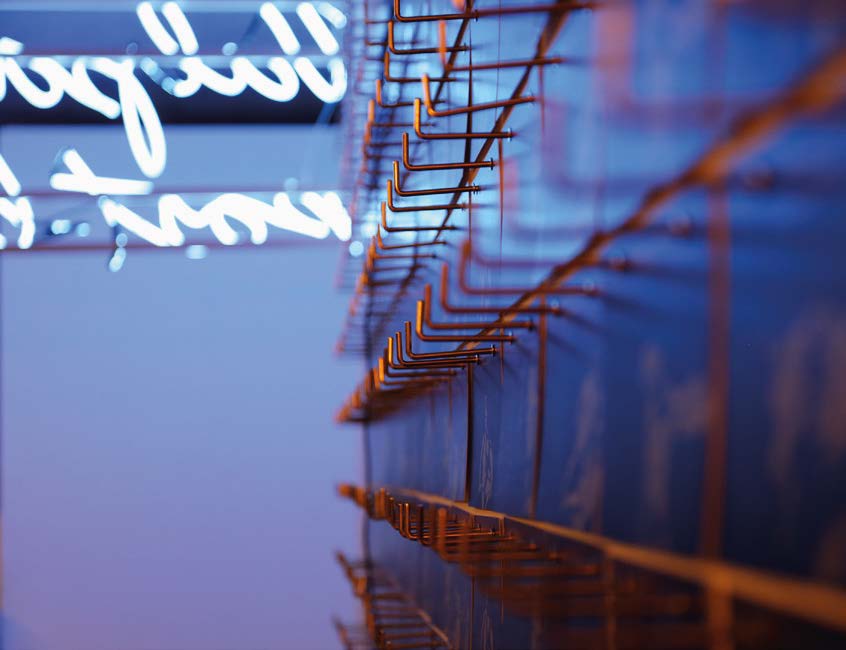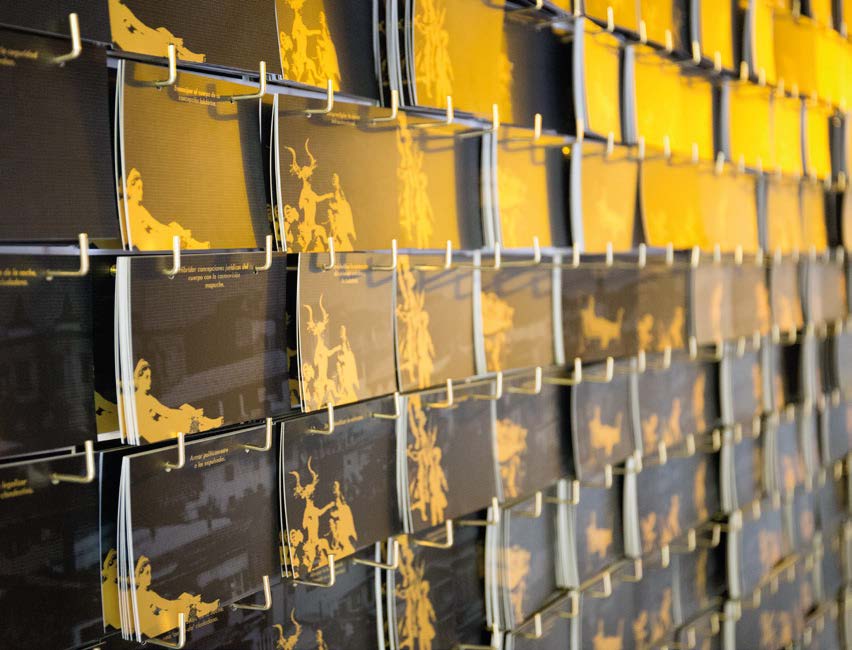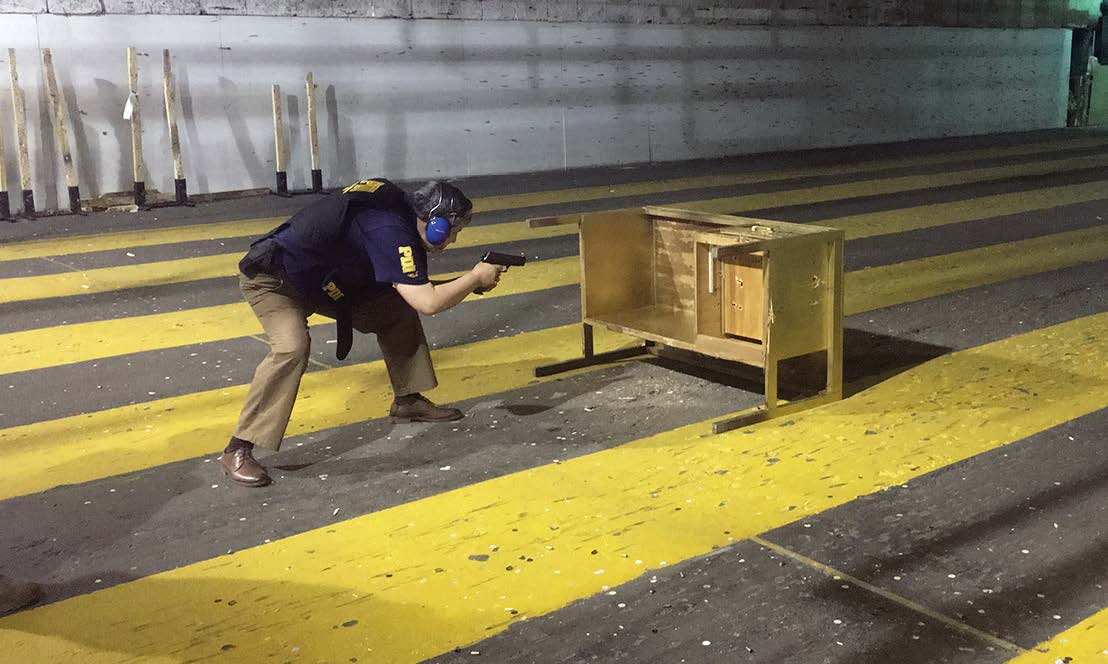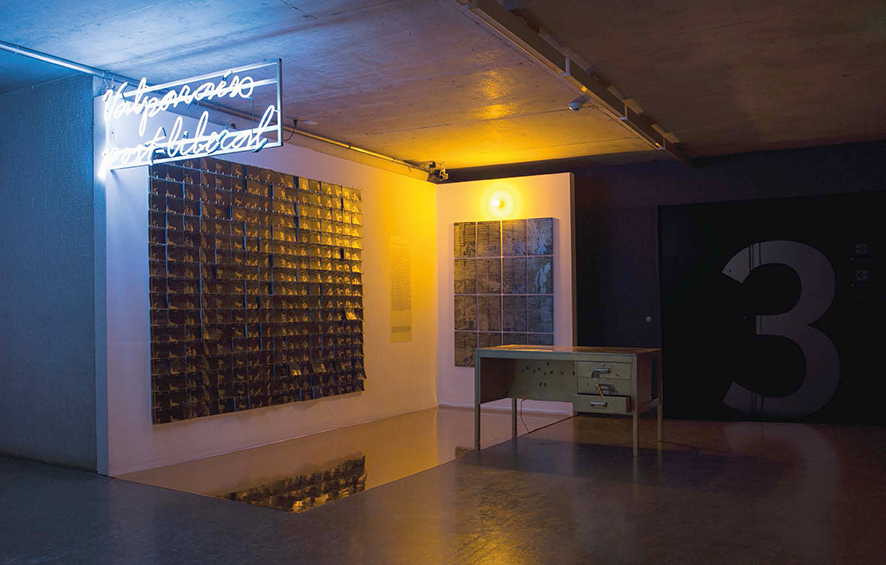During its industrial peak, Valparaíso witnessed an otherness’ encounter that allowed the consolidation of an eclectic, picturesque postindustrial landscape featured in every heritage postcard today. In turn, economic exploitation of the newcomers’ anxieties sponsored the cultural and political ties that established the port’s bohemian character. Today, Valparaíso is unable to both fit UNESCO standards and reconcile with its port – it is a city neither prosperous nor untouched by expulsions due to real estate speculation. The port city is the evidence of a failure that, far from clichés, is not due to a dysfunctional UNESCO-State-Municipality relation. We believe, rather, that the failure of Valparaíso as heritage is a symptom of the lack of epic aspirations in political and social projects in the 21st century. It is, in the end, the failure of liberalism.
In 2016, in fact, a report by Juan Luis Isaza (Colombian expert in heritage management) stated that Valparaíso’s management was ‘dreadful.’ This impasse is the hypothesis from which the idea of founding a new political common sense outside architectural conservation canons arises. Post-liberal Valparaíso takes up three of neoliberalism’s key concepts – urgency, unavoidability, and demonization of the State’s apparatus – to formulate a new political and institutional subjectivity. We are interested in building a political and managerial form that, instead of hiding, reveals those expelled from the heritage postcards. We hijack technocratic language to put it in service of dissonance and difficult encounters, as well as underground and undesirable cultural practices and economies. That is why we propose a ‘public trust’ – a property trust – as the main axis of a parallel State in charge of transforming a current tourist playground into a productive territory. In turn, the validation of excess – a foundational element of the port’s bohemia, misunderstood by views allergic to difference – will be the focus of this urban rebranding. With images of epic violence – stolen from the classical European tradition where the ideals of emancipation that once inspired revolutionary projects in America emerged – a representation of the new Valparaíso is achieved by vandalizing the picturesque postcard. It is about the critical hybridization between the political kitsch of optimistic visions and the vernacular kitsch of heritage conservation projects.
The 272 postcards and public policies – which reproduce an electoral process where the creation of Valparaíso’s post-liberal parallel State, its brand, and its trust are discussed – were subjected to public scrutiny at the 20th Chilean Biennale of Architecture and Urbanism. Such civic mobilization took place in a setting with the features of a (diurnal) grocery store or a container of nocturnal bohemia’s emancipatory alterities. By articulating a mass willing to attend the Wailing Wall of political theory with the urgency of Christmas shopping, Post-liberal Valparaíso exposes civic dissatisfactions and incipient social desires. The young demography questioned during the exhibition illustrates the anxiety unleashed by the growing suspicion of a dystopian, necropolitical future. Theoretical framework.
THEORICAL FRAMEWORK
Currently, the re-politicization of academic work within architecture schools runs the risk of becoming another of the recurrent searches for novelty. For instance, what was seen after global capitalism’s last crisis as a necessary dissociation between architectural discourse and marketing (namely, that of the icon and the starchitect), has led to a new trend that embellishes political violence with social management language without altering its institutional roots. Hence, we are interested in placing architectural discourse in a vulnerable, epistemological-nakedness situation.Although the proposal is an answer to the question of the failed conservation project, our idea is born from the antagonism with an Australia gradually devoted to the totalitarian suppression of dissent. Our life in the global south has forced us to face the gentle violence that, in exchange for security and stability, deprives liberal democracies of their emancipatory promises. That is why we appeal to re-politizing gestures that flourish in those scenarios where critical thinking is built – including schools of architecture – but we distance ourselves from the suspicious suppressions of excess and affection.
Although drunk with nostalgia for its glorious past, Valparaíso’s failure shows the key features for a promising urban and political project. Bohemian hedonism helps to imagine a crack within the liberal project. Thus, the post-liberal future defends liberal emancipatory imaginaries, but reorganized in a collective ownership project (land-trust), a brand (with membership) and a parallel government (accepting the irremediable damage infringed by the neoliberal discourse on the notion of State). The idea of a parallel State and its institutional apparatus are born of progressive re-appropriation of sub-utilized port areas and neglected architectural properties. The administrative management of these ‘reactivation islands’ exemplified in the establishment of urban fabric hernias towards the port – assumes the need to create a perpetual land-trust that would operate based on a new collaborative agreement with port operations.
The trust is both a space of optimism and an aspirational brand that exploits desire, fantasy, excess and otherness, celebrated as a huge bank of collective goods; thus, it renounces current narcissism – where success or failure is always private – empowering citizens by leaving the administrative instrument in their hands.
It is an idea as old as Ebenezer Howard’s cooperatives within garden cities or as new as global hipsterism’s pseudo-anarchist experiments.
We proposed a series of dissimilar measures arranged in 16 categories. Almost all take aspects that are still alive within the city and translate them into bureaucratic language, transforming them into public policy. Among these are policies of both recovery (of luxury and hate, for example) and discredit (to rush or self-managed entrepreneur, among others). These proposals submitted to public scrutiny – which will then be sent to the government as ‘friendly warnings’ – colonize key aspects of Valparaíso’s post-liberal scenario.Given the goal of creating political subjectivity, the project configures its language to attract voters, whether from humor or the unexpected poetic turn.
The language of a technocratic expert, used in the writing of postcards and public policies, is also a parody of the traditional left and its ascetic prudishness
against desire and excess. It seeks a new common sense capable of facing the predictable cruelties in the post-liberal rupture. Grafting advertising discourse into a political manifesto, Post-liberal Valparaíso adopts the same seduction tools that the project criticizes.
STAGING
Initially, we thought of ‘opening’ the postcard as a diorama in order to incorporate hidden, harassed or criminalized human landscapes – as those of the night. The idea of rescuing that unproductive space was one of the first gestures of the project. Since we condemn biennials’ didacticism (caricatured in the ‘good intentions’ of the 2016 Venice Biennale) and as the question about the failure of the unesco project in Valparaíso brought with it the pathology/saving architect trap, we decided to consciously move away from that obsession.
Rather, the project had to be irresistible, had to stand out in its seductive manner to exemplify the paradigm of Postliberal Valparaíso’s brand: a heterotopic, profuse place. The vandalized night postcard, with images of European neoclassical traditional violence printed in gold, seemed to us a gesture that would transform the insidious contents into something seductive. It was a comment on the value of the night, despite its bad reputation. The installation’s own accumulation, based on aggregated postcards, presented the way in which Valparaíso grew: a duel in which topographic discontinuity and industrial seriality colonized each other. When we were assigned the lobby facing Parque Cultural de Valparaíso’s vertical circulation (next to some bathrooms that recall a night club’s smells at dawn), we had to squeeze ideas and adapt the diorama to a wall.
The lighting opted to recreate the night’s underground, incorporating a neon sign with the Postliberal Valparaíso brand and a humble yellow spotlight.
The effect was maximized by the – not at all humble – golden mirrored pavement. The reflective floor not only addressed the lack of light: it also introduced
the metaphor of the parallel universe (or Post-liberal Valparaíso, the analogous State).
In the interstices of time stolen from our university schedules to develop this project, the ideas of the desk and the neon sign arose a night we went out for drinks, insisting on making pleasure our operation center. In turn, the postcards and the idea of drafting public policies were born in the depressing mornings before bureaucratic university work.
The desk helped us to understand what we were doing: moving away from the language of architectural representation and approaching the Dada gesture:
absurd, enigmatic, rude and childish. The day that the desk, already painted in gold, was shot on level -2 of the police station polygon by the officer and architect
Renato Román, the project reached its greatest poetry. The exercise of creative violence had moments of great beauty: between bursts, the shots pattern was assessed as if it were a work of art. This act (which summarizes the seriousness with which we approached even the most absurd aspects of the project) turned us, without knowing it, into performance artists. The voice of Alejandro Arellano – journalist, broadcaster, witness and victim of one of the historical expulsion processes suffered by the Chilean citizenship– was incorporated into the desk. The gravitational weight of that voice captures the beauty of political risk at a time when the citizen once again normalizes fear and caution. Ironically, the staged sum of all gestures and codes – visual, tactile, auditory and textual – ended up creating a living diorama; the same we thought we had discarded once we were assigned a wall instead of a space. In any case, we liked joining the great tradition of political gestures which started on a wall.



